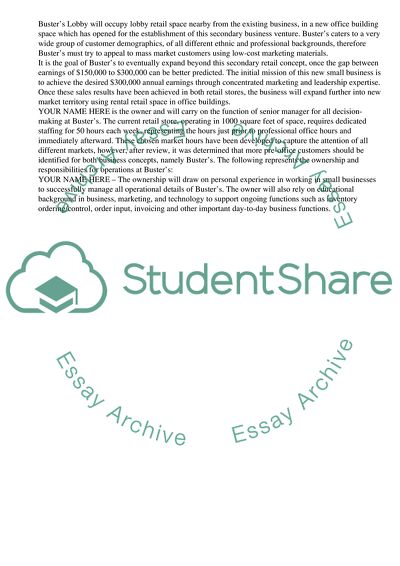Cite this document
(Business Plan for Buster's Lobby Term Paper Example | Topics and Well Written Essays - 3250 words - 1, n.d.)
Business Plan for Buster's Lobby Term Paper Example | Topics and Well Written Essays - 3250 words - 1. Retrieved from https://studentshare.org/business/1732406-business-plan
Business Plan for Buster's Lobby Term Paper Example | Topics and Well Written Essays - 3250 words - 1. Retrieved from https://studentshare.org/business/1732406-business-plan
(Business Plan for Buster'S Lobby Term Paper Example | Topics and Well Written Essays - 3250 Words - 1)
Business Plan for Buster'S Lobby Term Paper Example | Topics and Well Written Essays - 3250 Words - 1. https://studentshare.org/business/1732406-business-plan.
Business Plan for Buster'S Lobby Term Paper Example | Topics and Well Written Essays - 3250 Words - 1. https://studentshare.org/business/1732406-business-plan.
“Business Plan for Buster'S Lobby Term Paper Example | Topics and Well Written Essays - 3250 Words - 1”, n.d. https://studentshare.org/business/1732406-business-plan.


